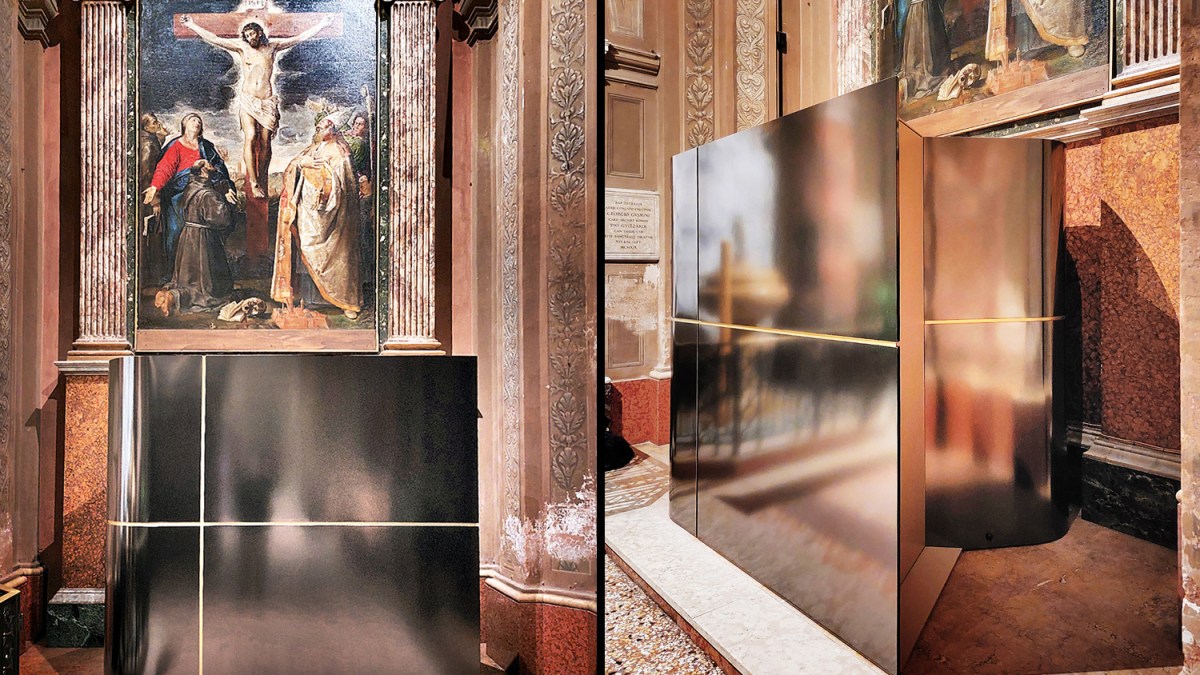A futuristic confessional pod designed to put penitents at ease has sparked a fierce backlash from a local heritage group after its installation in an Italian church.
Placed in a side chapel of the Santa Maria della Carita (Saint Mary of Charity) church in Bologna, the slick booth boasts soft lighting, interior niches for artwork and a Bible, and a semi-reflective laminated exterior with two minimalist lines forming a cross.
It sits at the foot of a 16th-century painting by Annibale Carracci, a Bologna-born successor of Raphael and Michelangelo, which is the church’s most treasured masterpiece.
• King Charles and Pope Leo hold historic prayer service in Vatican
Penitents and confessors sit face to face below an aperture offering a glimpse of Carracci’s Crucifixion with Saints (1583). Sophisticated soundproofing and acoustics allow sounds from the church to filter in while preserving the privacy of confession.
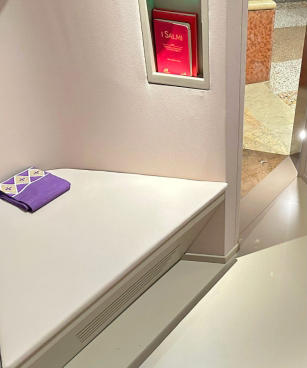
Inside is soft lighting and a niche for a bible
KRISTINA GULYAYEV/CORRIERE DI BOLOGNA
But the Committee for Historic Bologna has condemned the installation for what it described as “sinister squalor”, calling for its removal and for the original wooden confessional to return in its place.
In a Facebook post, the heritage group said the addition had transformed the chapel “into an abomination, and the inclusion of a pseudo-artistic object that has nothing to do with Annibale’s painting or the church, requires urgent reflection”.
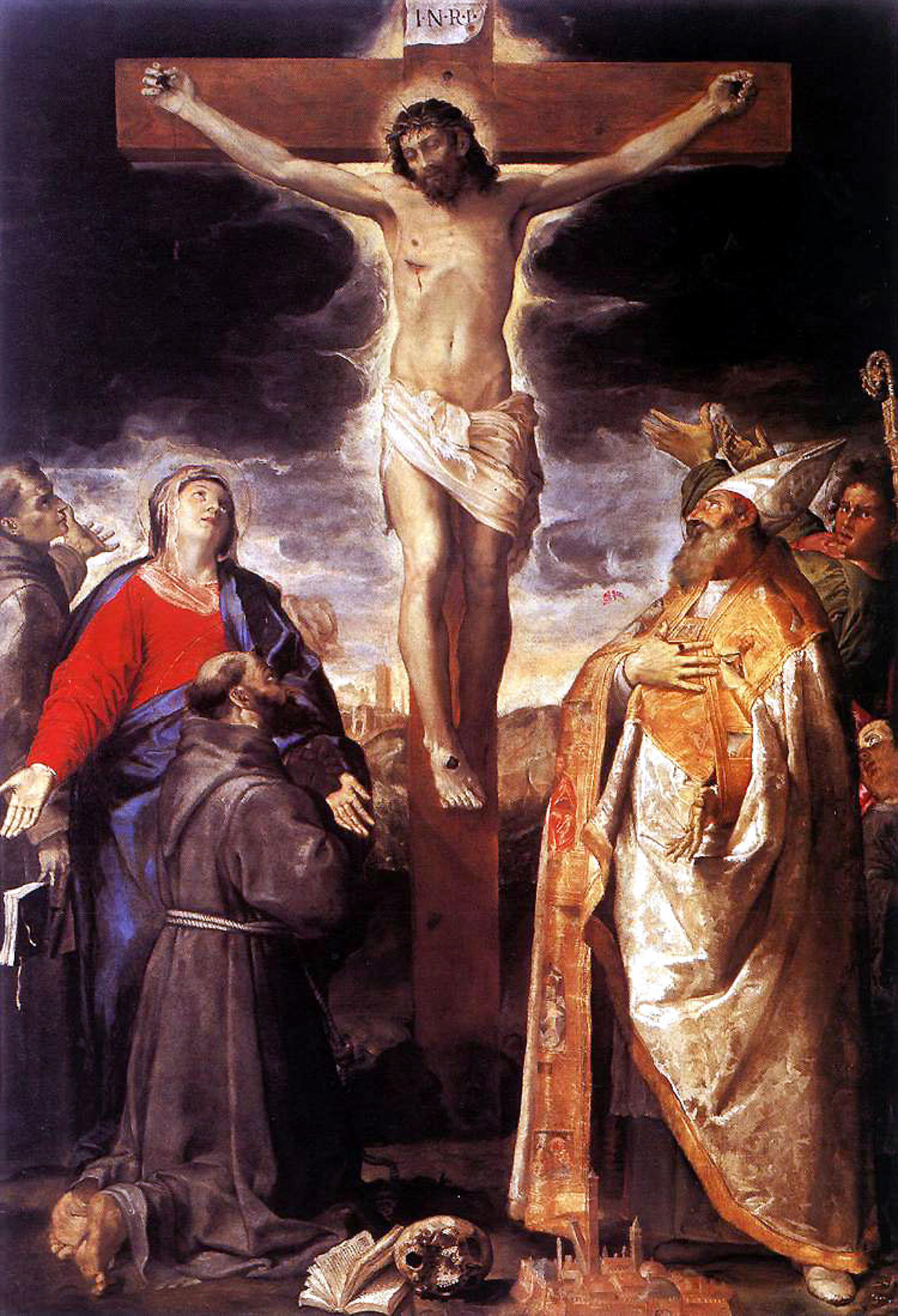
Crucifixion with Saints by Annibale Carracci
ALAMY
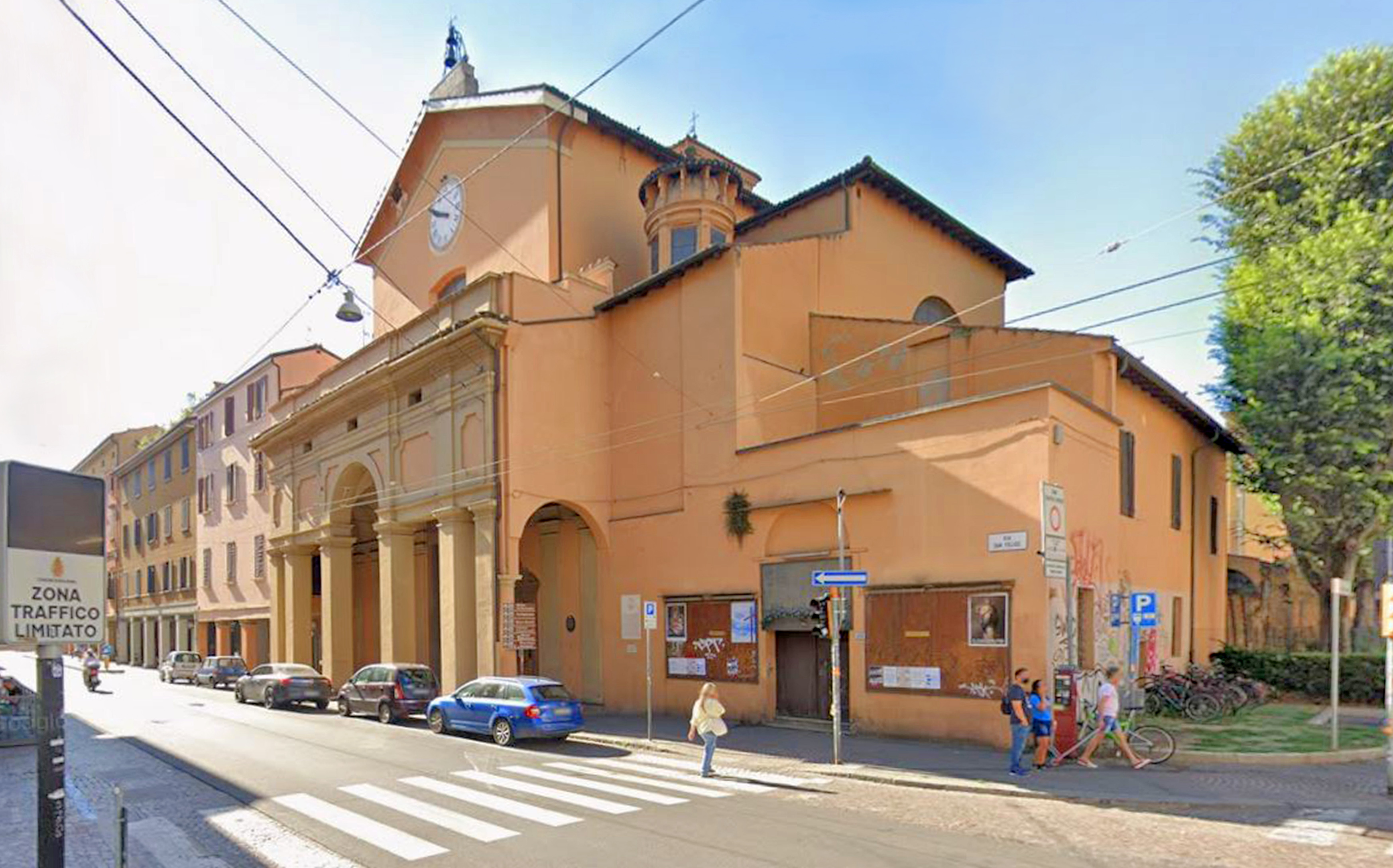
The exterior of Santa Maria della Carita
Confessional boxes first appeared in the 16th century, when Cardinal Charles Borromeo of Milan — a key figure of the Counter-Reformation — designed a wooden booth with a grille and curtain separating priest and penitent, to prevent inflamed passions as sins were confessed.
• London churches modernise for shot at salvation
Laura Venturi, one of two architects behind the new confessional, defended the box, saying it provided worshippers with a much-needed private space for dialogue. “The previous confessional did not allow for face-to-face exchange, so they often found themselves confessing on two chairs pulled up in the church,” she said.
Venturi said the box was created “in synergy” with Don Davide Baraldi, the church’s progressive priest and a part-time novelist known for promoting interracial dialogue.
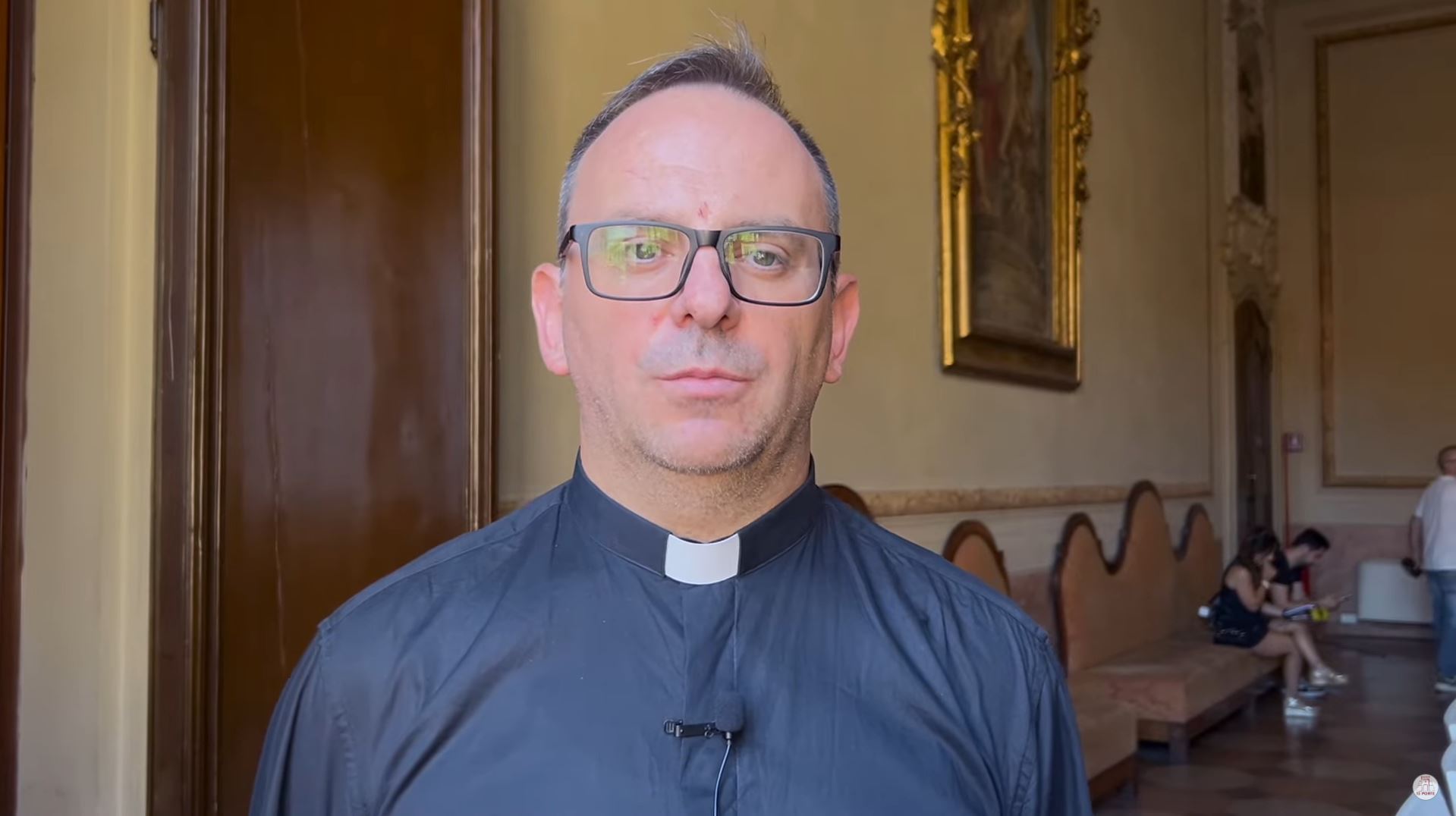
The church’s priest, Davide Baraldi
• 16 of the best Italian cities for food
“We are all used to seeing dark wood furnishings divided into two separate areas dedicated respectively to the priest and the faithful,” Baraldi told newspaper Corriere della Sera. “Not everyone has appreciated it … It sometimes takes time.”
Venturi indicated the model was replicable, meaning it could one day be seen in other churches.

